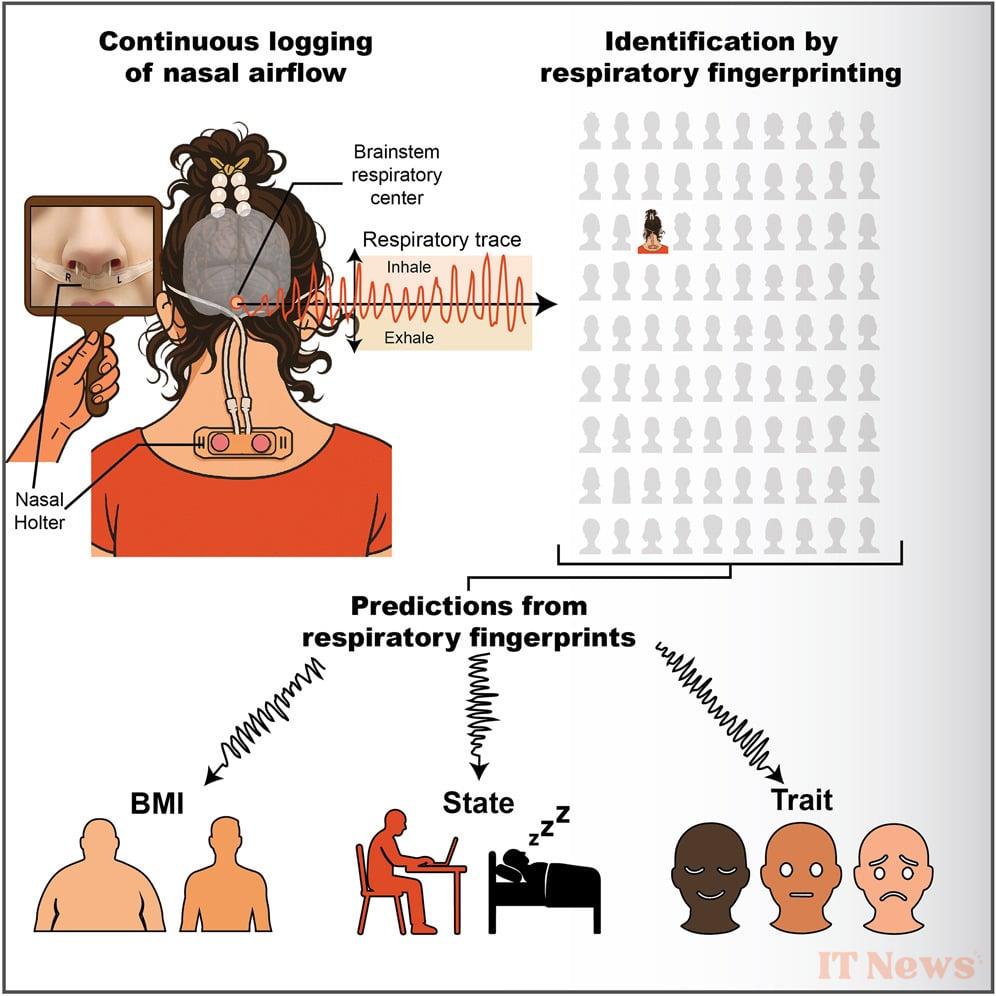A new study conducted by Israeli researchers believes they have discovered a new physical marker specific to each individual: fingerprints, retinas, and facial features could soon be joined by... your breathing style.
Like all physiological functions, breathing originates in the brain. Each inhalation and exhalation is controlled by a complex system, rooted primarily in the autonomic nervous system, but with substantial input from the somatic nervous system—the one that manages voluntary movement control, among other things.
However, we know that each brain is unique in many ways, both structurally and anatomically, as well as chemically and physiologically. This prompted the team behind this work to ask a simple question: since this organ doesn't work exactly the same from one individual to the next, shouldn't each person's breathing be equally unique?
Breathprints unique to each individual
To test this hypothesis, the study authors asked 97 volunteers to wear a medical device specifically designed for this study. It vaguely resembles a respirator, with a plastic tube inserted into each nostril – but with a very different purpose. Instead of contributing to breathing, it precisely records the air movements that circulate through the volunteer's nose.
After 24 hours of data collection, they identified around a hundred distinct parameters, such as inhalation duration, breathing cycle frequency, and airflow asymmetry between the two nostrils, to characterize the person's breathing. The patients then lived their lives normally for a period of several weeks to two years. Forty-two of them then returned to the lab to undergo the same test, to check whether the patterns identified the first time had remained constant.
And the result was quite spectacular. Using a machine learning model trained to spot subtle relationships between these 100 parameters, they were able to identify blind participants with 98.6% accuracy. A score that the team deemed sufficient to establish the concept of "breathprint", by analogy with the fingerprints commonly used for this purpose.
A diagnostic and therapeutic potential
Based on this encouraging preliminary result, the authors decided to take the investigation a little further. It is known that certain mental and physical conditions can directly affect breathing; a panic situation or intense pain, for example, tends to generate hyperventilation and dyspnea. By combining this observation with the results of the first experiment, the team asked a subsidiary question. Beyond respiratory illnesses, where the link is quite obvious, could these unique patterns offer us new ways to understand and treat other physical and mental concerns?
To get an idea, the authors asked the participants to fill out a short questionnaire about their mental health. And a clear trend emerged in the results: patients with anxiety concerns generally presented shorter inspirations than others, and more variability in their breathing rate during their sleep.
The scope of this small, complementary experiment is obviously very limited, as it was not part of the initial program. But it still opens up an interesting avenue of research that deserves to be explored in the future; with any luck, it will lead these researchers straight to promising new diagnostic methods, and perhaps even to novel treatment techniques.
"We can understand how specific breathing patterns can predict various diseases," summarizes Timna Soroka, lead author of the study. "But we also want to move beyond diagnosis to treatment, and we're cautiously optimistic," concludes his colleague Noam Sobel. The study text is available here.




0 Comments